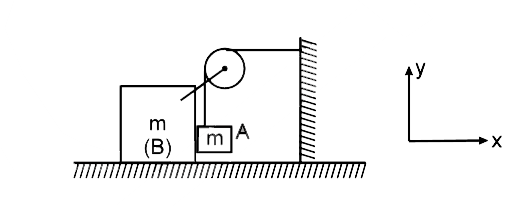A 6kg block B rests as shown on the upper surface of a 15kg wedge A . Neglecting friction , determine immadiately after the system is released from rest (a) the acceleration of A (b) the acceleration of B relative to A (take g=10m/s2)
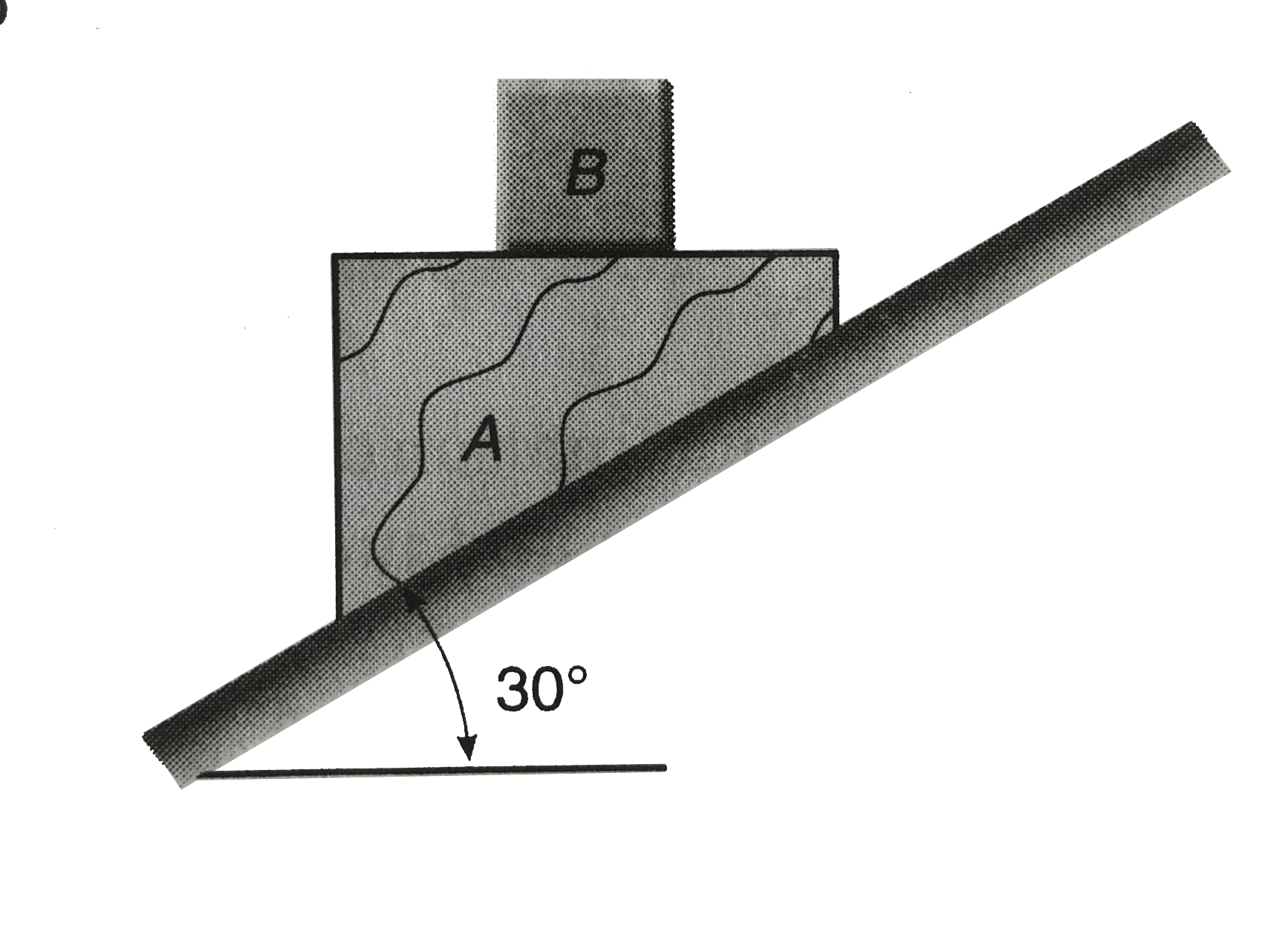
Block B will fall vertically downwards and A along the plane.
Writing the equations of motion .
For block B
mBg−N=mBaB
or 60−N=6aB
(N+mAg)sin30∘=mAaA
or (N+150)=30aA ...(ii)
Further aBaAsin30∘
or aA=2aB ...(iii)
Solving these three equations , we get
(a) aA=6.36m/s2
(b) aBA=aAcos30∘=5.5m/s2
Topper's Solved these Questions
- BOOK - DC PANDEYCHAPTER - LAWS OF MOTIONEXERCISE - example86videos
LAWS OF MOTION
- BOOK - DC PANDEYCHAPTER - LAWS OF MOTIONEXERCISE - Check point 5.120videos
LAWS OF MOTION
- BOOK - DC PANDEYCHAPTER - LAWS OF MOTIONEXERCISE - Comprehension9videos
LAWS OF MOTION
- BOOK - DC PANDEYCHAPTER - KINEMATICS 1EXERCISE - INTEGER_TYPE15videos
KINEMATICS 1
- BOOK - DC PANDEYCHAPTER - LAWS OF THERMODYNAMICSEXERCISE - Level 2 Subjective18videos
LAWS OF THERMODYNAMICS
Similar Questions
Knowledge Check
- Question 1 - Select One
In the system shown block is released from rest on the inclined surface of the wedge. The acceleration of the wedge will be (assume friction to be absent)
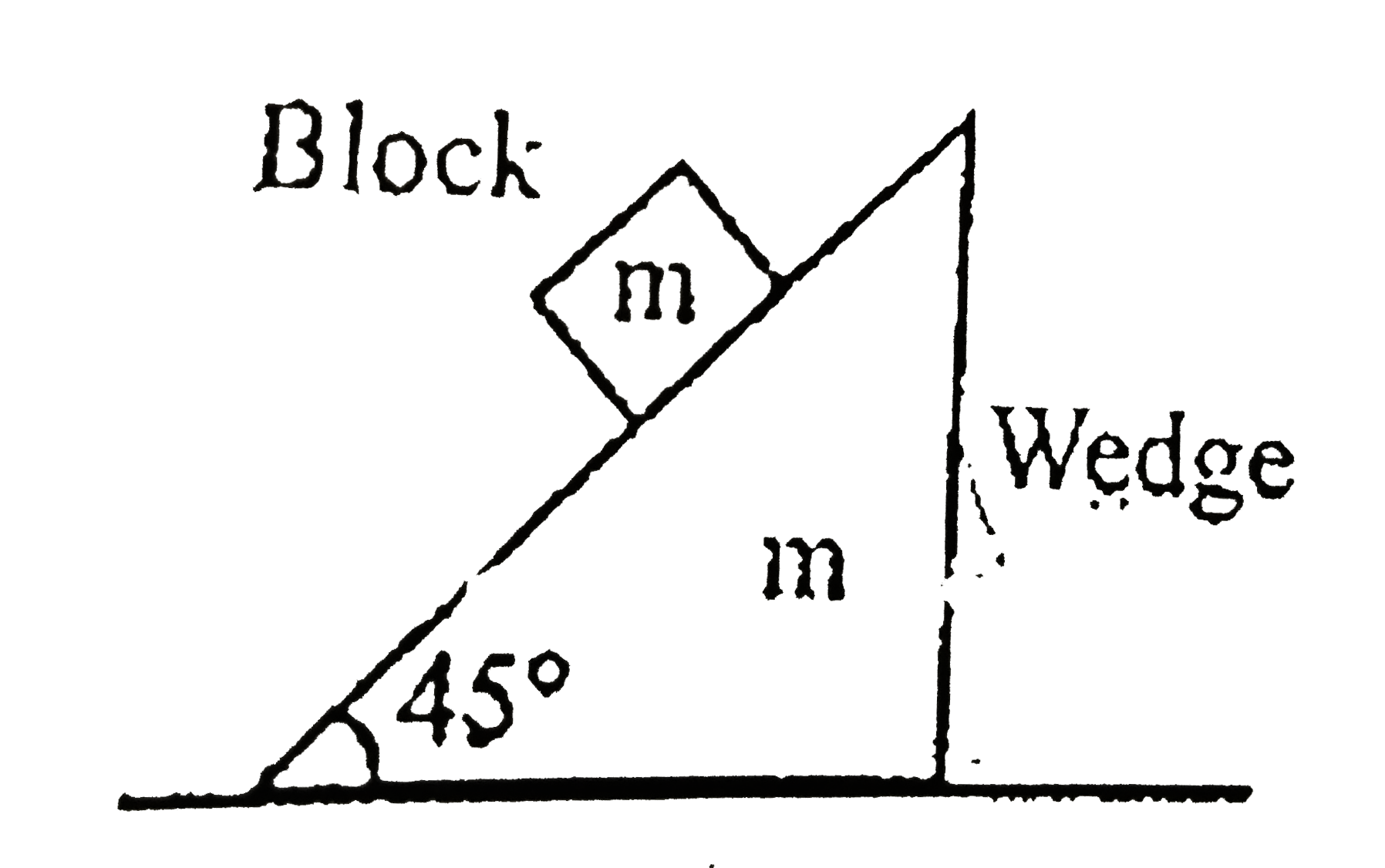 Ag5Bg4Cg3Dg2
Ag5Bg4Cg3Dg2 - Question 2 - Select One
In the system shown in fig., mA=4m, mB=3m, and mc=8m. Friction is absent everywhere. String is inextensible and light. If the system is released from rest, then

Acceleration of block C isA1/4ms−2B2/7ms−2C5/4ms−2D1/3ms−2 - Question 3 - Select One
In the system shown in fig., mA=4m, mB=3m, and mc=8m. Friction is absent everywhere. String is inextensible and light. If the system is released from rest, then

Acceleration of Block B isA20ms−2B5ms−2C15ms−2D10ms−2
Figure-2.54 shows a block of mass m is placed on an inclined wedge of mass M If the system is released from rest find the acceleration of m and M.
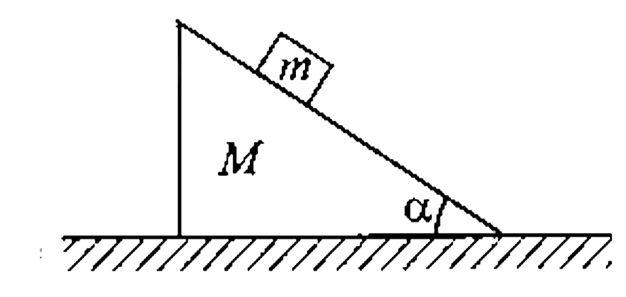 View Solution
View SolutionThe block B starts from rest and slides on the wedge A which can move on a horizontal surface, Neglecting friction, determine (a) the acceleration of wedge, (b) the acceleration of the block relative to the wedge.
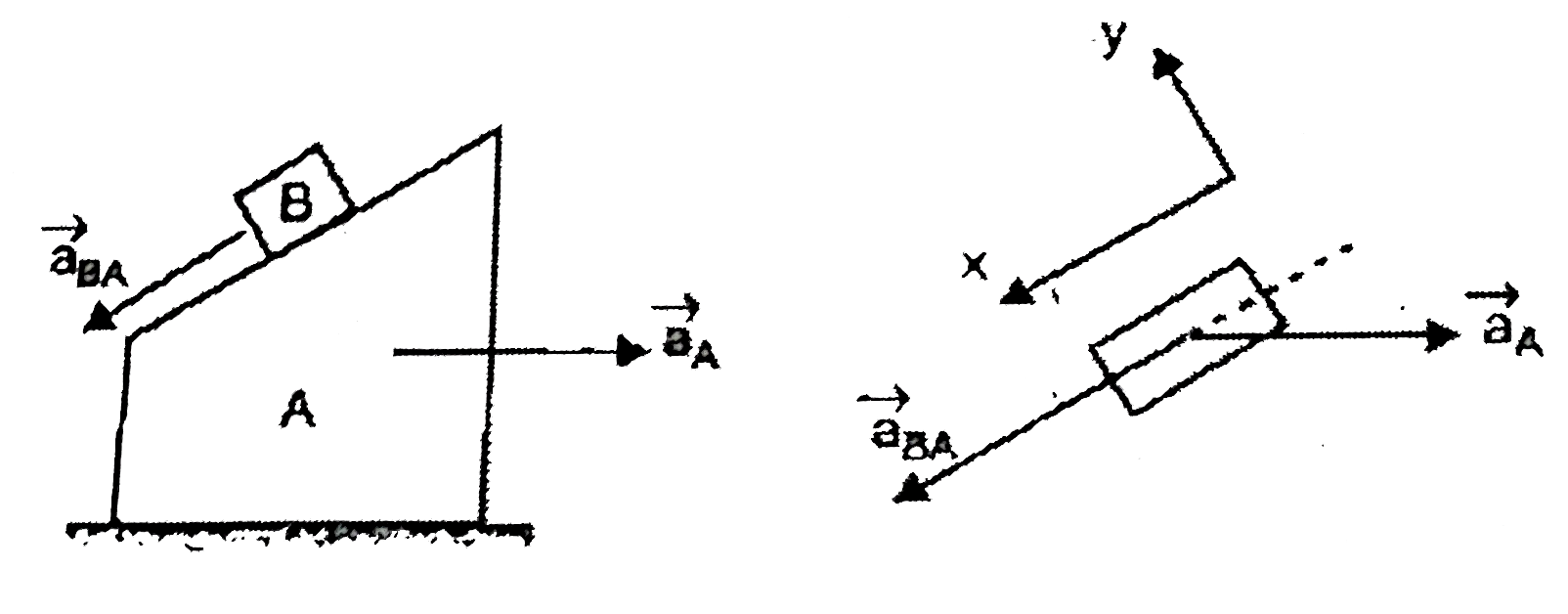 View Solution
View SolutionA 20kg block B is suspended from a cord attached to a 40kg cart A. The ratio of the acceleration of the cart in cases (i) & (ii) shown in figure immediately after the system is released from rest is _________ . (neglect friction)
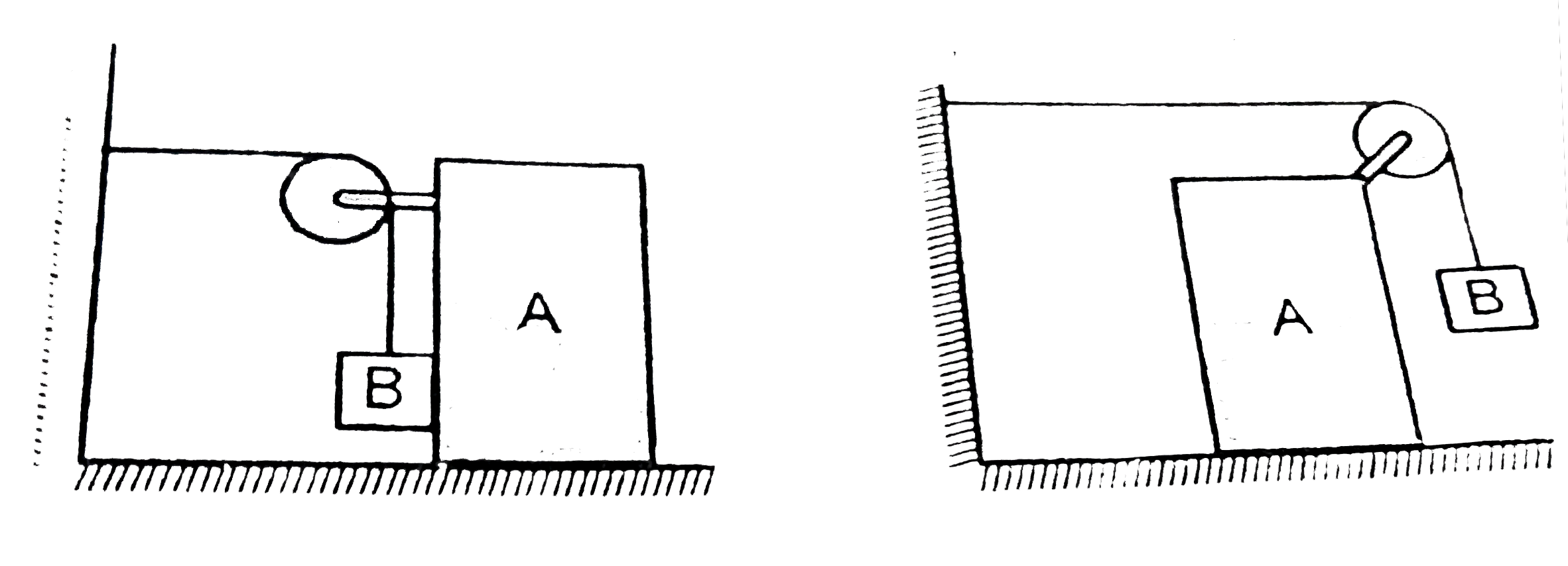 .View Solution
.View SolutionThe acceleration of 3 kg block in the arrangement shown in the diagram ,when the given system is released from rest is
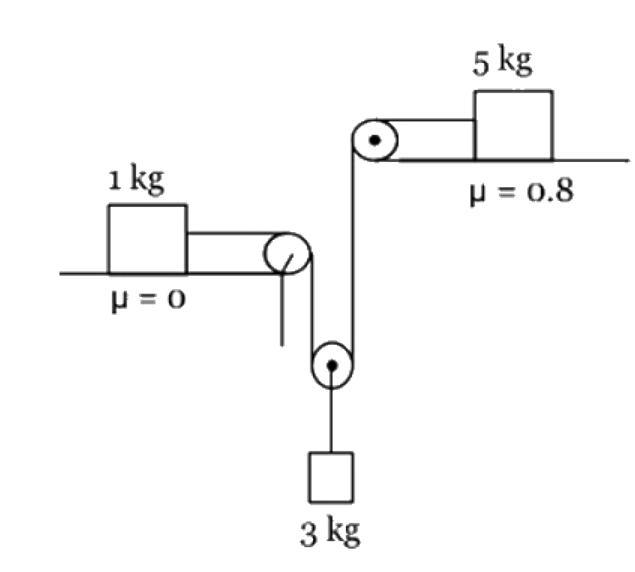 View Solution
View SolutionTwo blocks of masses 5kg and 10kg are attached with the help of light string and placed on a rough incline as shown in the figure. Coefficients of friction are as marked in the figure. The system is released from rest. Determine the acceleration of the two blocks.
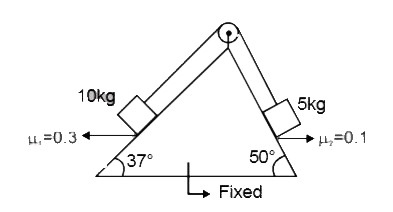 View Solution
View Solution


